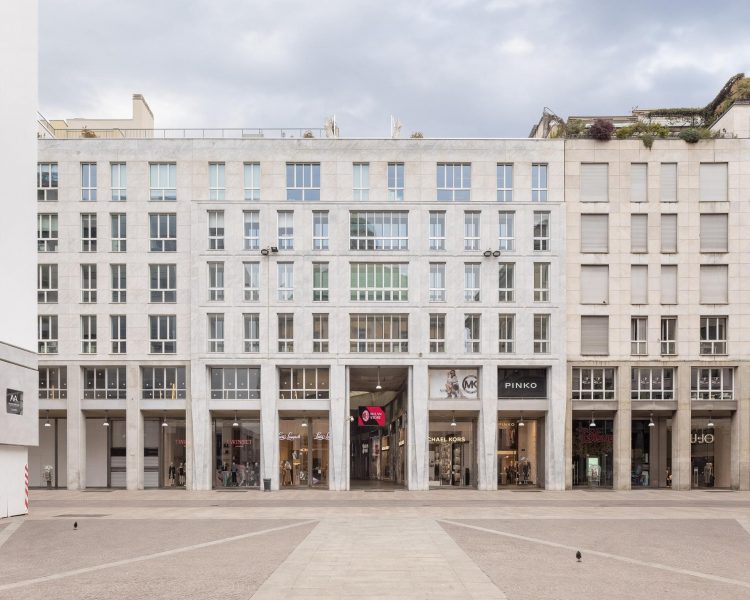Antonio Citterio Patricia Viel offers a glimpse of tomorrow’s working space

Antonio Citterio Patricia Viel architecture and design firm completes the regeneration of two historical buildings in the heart of Milan into a flexible and highly sustainable complex, offering a glimpse of the working space of tomorrow.
International architecture and design firm Antonio Citterio Patricia Viel (ACPV) unveils the renovation of Galleria San Carlo and of Galleria Passerella 2, in the heart of Milan’s historic center. Transforming a 21,000 GLA (Gross Leasable Area) block of buildings designed in the Fifties into a flexible and sustainable space, ACPV’s intervention takes a careful approach to the conservation of the buildings’ original details, while elevating their character and elegantly integrating the architecture in the surrounding urban context.

By meeting the highest international building standards for environmental sustainability and personal well-being, the project by ACPV creates a flexible space able to adapt to its users’ needs, while preserving the original architectures as designed in the Fifties by renowned architects, Gio Ponti, Fornaroli and Soncini brothers.
“The new space design offers a glimpse of the workspace of the future,” says Patricia Viel, co-founder of ACPV firm. “The space of the offices can be easily changed and adapted to their users’ needs – a feature that comes quite handy, considering how work paradigms are changing because of the covid-19 emergency.”
ACPV designed a false ceiling that allows lights and partition walls to be easily moved, integrated or eliminated, so as to create a reconfigurable space able to quickly switch from open to closed workspaces.
The project by ACPV integrates the highest sustainability and personal well-being standards, which led to energy class A building certification besides the prestigious LEED Gold and Well certifications.
The building was sold by Goldman Sachs to DeA Capital Real Estate SGR S.p.A. for more than € 280 million, marking one of the most important Real Estate transactions of the year 2019 and the biggest single asset deal in terms of size.
OUR TAKE ON…
THE FUTURE OF OFFICE SPACE DESIGN & URBAN PLANNING: What needs to change are not objects but our behaviors, and the relationships we have with things and spaces.
What does this imply for work environments? That the open space can no longer be conceived and designed in real-estate terms of headcounts. Instead, we need to start designing shapeable places of work that respond to daily needs. Let’s put it this way: we would have workspaces that in the morning behave in one particular way, and in the afternoon they switch around to respond to new needs.
The space of work will no longer be supplied to the worker as part of their basic equipment – like the uniform used to be, and the way drawers and electronic coffee-machine tokens are given out these days. It will, however, be used as a function of a necessity: one will not go to work because it is an obligation, but because in a given day physical presence is needed in a specific space – whether it be at the office desk, or in the meeting room.
The real challenge, from today onwards, will not be a question of space measurements, but rather of creating a new relationship with daily routines, learning to design one’s own day and – as a consequence – to design the relation with the place. For this reason, it is no longer meaningful to think of the workstation as a space reserved for an individual. The workstation becomes a communal space.
This changes the idea of hygiene and objects of shared use: for example, the desks will have built-in hand sanitizer flasks; the use of the restroom will become hands-free; air circulation will receive more attention with more frequent maintenance of filters; the surfaces will have to withstand more wear and tear because of frequent cleaning – with implications to the manufacturing industry, where certifications for the resistance of materials will have to be revised.
If we apply this concept to a larger scale, to that of the city, we see that the densely-populated city may continue to exist only if it retains spaces of tranquility and opportunities for recurring expansions, allowing it to overcome the compactness and concentration that may prove to be – as Covid-19 is now revealing – dangerous.


